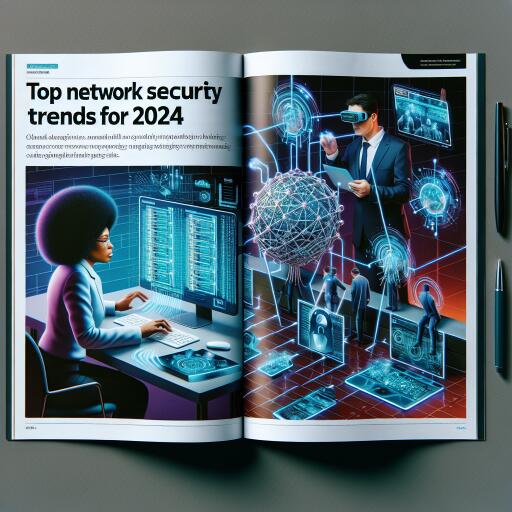Exploring the Frontier of Network Security: The Rise of SASE in 2024
As we progress through the year, the evolutions within the realm of network security are becoming increasingly apparent. The landscape, now more than ever, is a testament to how the cyber world adapts and transforms. The Secure Access Service Edge (SASE) model, in particular, has emerged as a beacon of innovation, signaling a monumental shift towards integrated, efficient, and secure network management solutions. Let’s delve into the anticipated developments that are set to redefine the cybersecurity standards in 2024.
Embracing the Single-Vendor SASE Paradigm
The transition towards a single-vendor SASE model is accelerating. This approach consolidates various components under one umbrella, facilitating seamless deployment, streamlined management, and optimized operational efficiency. The cumbersome days of juggling myriad vendors for different SASE elements are giving way to a more integrated, cohesive strategy. This not only simplifies the cybersecurity infrastructure but also promises substantial cost reductions, potentially halving existing expenses through decreased complexity and enhanced compatibility.
Advancements towards Zero Trust with Unified SASE
At the heart of SASE’s promise lies its potential to significantly advance the journey towards a zero-trust architecture. Real-time validation and continuous verification, based on nuanced user and device behavior, become not just an ambition but a tangible reality. For organizations, especially those with lean IT teams, the move towards a unified agent model is a game-changer, offering an all-in-one platform for managing security needs efficiently. This consolidation is poised to revolutionize how security protocols are enacted and managed.
The AI-Driven Evolution
Integrating artificial intelligence (AI) into SASE solutions is no longer optional but a necessity. The future belongs to AI-powered SASE solutions capable of preempting zero-day threats and offering robust protection against the increasingly sophisticated panorama of cyber threats, including ransomware. A fully integrated SASE solution, enhanced with AI and machine learning capabilities, stands as the vanguard against cyber vulnerabilities, ensuring a security posture that is both proactive and predictive.
Expanding the SASE Framework
SASE’s adaptability is set to widen, covering not just traditional office setups but also home offices and microbranches, ensuring seamless, secure connectivity across varied environments. This includes enhancing ‘coffee shop networking’ with BYOD and agent-less access capabilities, alongside extending protective measures to operational technology (OT) and critical infrastructure through strategic SSE components integration.
Incorporating Digital Experience Monitoring (DEM)
The incorporation of Digital Experience Monitoring (DEM) into SASE frameworks marks a significant stride towards holistic, end-to-end visibility and control. Once considered a luxury, DEM is fast becoming indispensable, offering critical insights into user experience and application performance. For IT teams, this means not just enhanced operational efficiency but also a notable reduction in costs associated with network management and troubleshooting.
In summation, the trajectory towards SASE and zero trust is not just continuing; it’s accelerating. With the fusion of AI, unified management, and comprehensive DEM, the network security domain is evolving into a more secure, efficient, and adaptable sphere. The benefits are clear: unparalleled security, streamlined operations, and an overall superior user experience. As we venture deeper into 2024, these trends not only forecast the future of cybersecurity but also lay down the groundwork for the next era of digital transformation.










